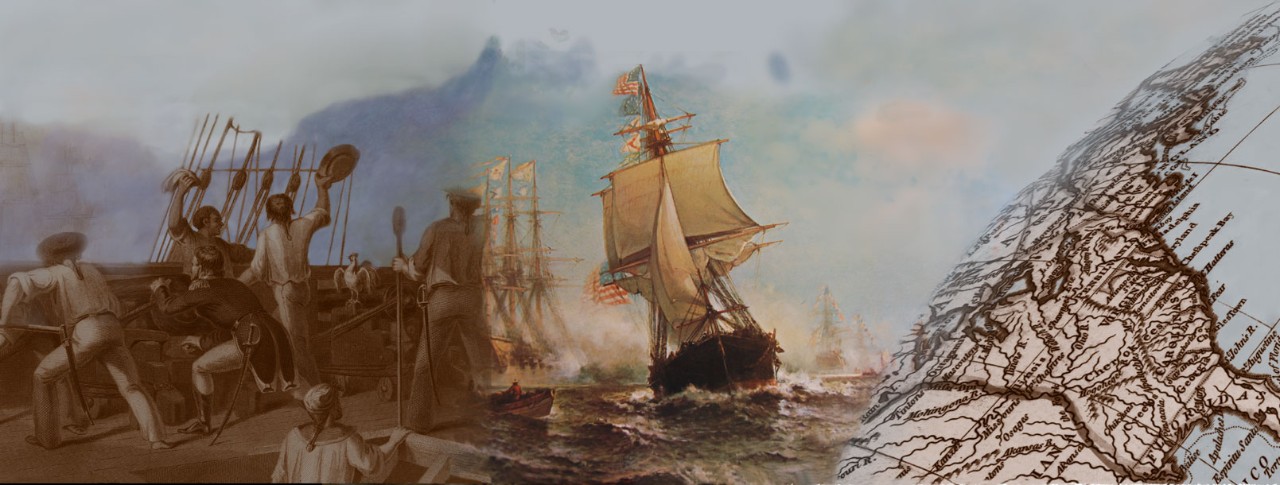
Byrd, Richard E.
Richard Evelyn Byrd was born on 25 October 1888 in Winchester, Virginia. He was appointed from that same state to the U.S. Naval Academy at Annapolis, Maryland and graduated in 1912. He was temporarily assigned to USS South Carolina and subsequently served on board USS Kentucky, USS Wyoming, USS Missouri, and the armored cruiser Washington. He transferred to USS Dolphin and was promoted in June 1915 to Lieutenant Junior Grade. In March 1916, due to a disability, Byrd was placed on the retired list, only to be reactivated two months later as an Inspector-Instructor of Naval Militia at Providence and Newport, Rhode Island. During World War I, he completed training at the Naval Aeronautic Station at Pensacola, Florida and was designated an aviator. In August 1918, he received orders to U.S. Naval Aviation Forces in Canada and was temporarily promoted to Lieutenant, which was followed by a temporary promotion to Lieutenant Commander.
After World War I, Byrd was assigned to the Director of Naval Aviation office in Washington D.C. and prepared for trans-Atlantic flights of NC Planes. In August 1921, he relocated to England for training and a joint program with the British on the completion of a dirigible. Returning to the Bureau of Aeronautics, he was reverted back to Lieutenant. In February 1925, Byrd was permanently promoted to Lieutenant Commander and commanded the Naval Flying Unit accompanying the 1925 MacMillan Polar Expedition. In May 1926, he headed the Byrd Expedition to the North Pole. On 9 May 1926, with Chief Aviation Pilot Floyd Bennett, USN, Byrd courageously flew over the pole. For "the risk of his life" on this occasion, he was awarded the Medal of Honor. In January 1927, he was promoted to Commander on the retired list. In July 1927, Byrd made his Trans-Atlantic flight from New York to Paris, France. During 1928-1930, he headed his second expedition, which was based in the Antarctic. On 28 November 1929, he made a day's flight to and from the South Pole. In December, he was advanced to Rear Admiral by Congress on the retired list.
In October 1931, Byrd was relieved from active duty and prepared for his second Antarctic Expedition from 1933 to 1935. During 1939-1940, he headed his third Antarctic Expedition. For World War II, he was recalled to active duty and served at the Bureau of Aeronautics in a consultant position inspecting advanced bases and flying special missions in the Pacific and European areas, which were of great value to the country's national defense. In December 1946, Byrd returned to the Antarctic for Operation High Jump, returning in the Spring. In September 1947, he was relieved from active duty. Two years later, he returned to active duty and was a chairman for government programs helping communist refugees. In March 1955, he led Phase I of Operation Deep Freeze to the Antarctic. Richard E. Byrd died on 11 March 1957 and is buried at Arlington National Cemetery, Arlington, Virginia.
USS Richard E. Byrd (DDG-23), 1964-1992, and USNS Richard E. Byrd (T-AKE-4), (2007-____), were named in honor of Rear Admiral Richard E. Byrd.
This page features, and provides links, to selected views concerning Rear Admiral Richard E. Byrd.
For additional images related to Richard E. Byrd, see:
- Rear Admiral Richard E. Byrd, USN, Group and Miscellaneous Views, taken up to 1920
- Rear Admiral Richard E. Byrd, USN, Group and Miscellaneous Views, 1921-1927
- Rear Admiral Richard E. Byrd, USN, Group and Miscellaneous Views, 1928-1945
- Rear Admiral Richard E. Byrd, USN, Group and Miscellaneous Views, 1946-1957
- Rear Admiral Richard E. Byrd, USN, Artwork and Memorials
- Rear Admiral Richard E. Byrd, USN, Miscellaneous Aircraft


